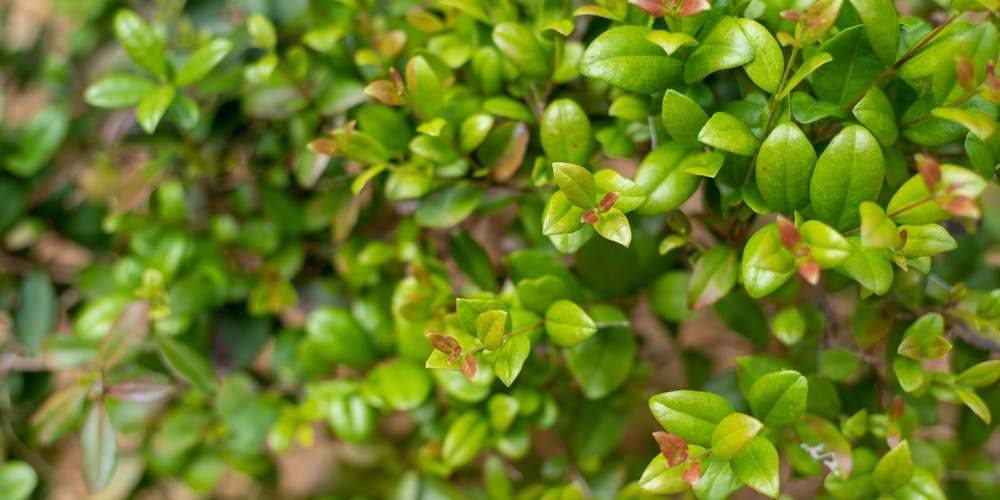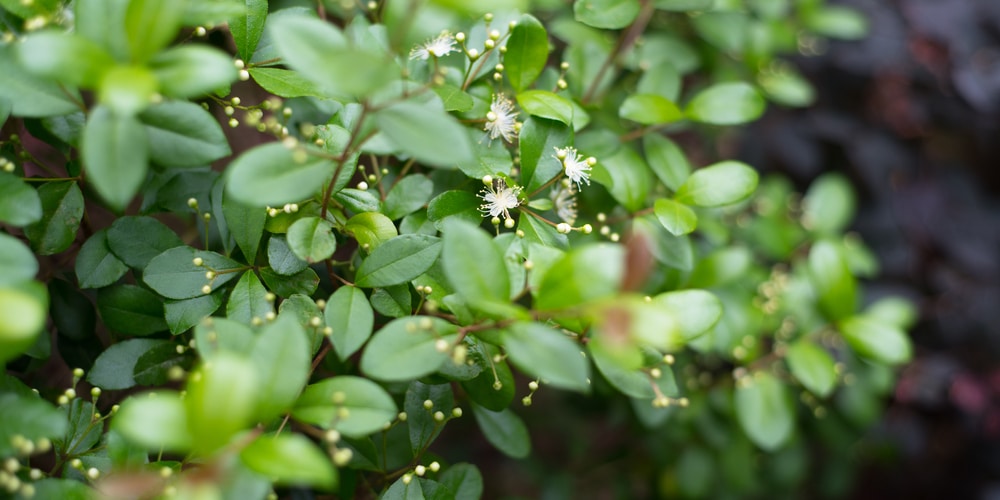The Simpson Stopper makes an excellent tree for lawns, parks, and other large areas. It is also used for windbreaks and screens and is native to Florida as well as many areas in the Caribbean, Mexico, Columbia, and Venezuela.
Once established, these trees are very easy to care for and grow well in various soil types and warmer climates. Let’s look at how to grow and care for a Simpson Stopper tree.
What is a Simpson Stopper Tree?

The Simpson Stopper tree has the botanical name Myrcianthes Fragrans. It is an evergreen tree that grows up to 30 feet tall and is sometimes referred to as the twinberry tree. It has a pyramidal shape when young, becomes more rounded with age. The leaves are dark green, measuring 2 to 3 inches long and 1 inch wide. These trees produce red berries in the fall and bloom with snowy white flowers during the spring.
The berries can be eaten by humans but are full of seeds and don’t taste very good. Birds and other wildlife more commonly eat them.
Simpson Stopper trees can get quite large but can also be regularly pruned and grown as shrubs. They are part of the Myrtaceae family which also includes eucalyptus trees. These trees also have attractive bark, which is reddish-brown and pealing.
Simpson Stopper tree Care

Simpson Stopper trees are easy to grow and adapt to a wide range of soil types and climates. They grow best in USDA zones 8b to 11. Here are some tips to help you grow and care for a thriving Simpson Stopper:
Sunlight needs
The Simpson Stopper tree requires full sun to partial shade. Once established, they are relatively drought-tolerant and grow well in hotter climates. They can also cope with strong winds and do well in coastal areas and in land.
Soil
The Simpson Stopper tree prefers well-drained soil but can cope with poor-quality sandy soils. As the trees grow along the coast, they do well in sandy soil, even with high salt content. They can also cope with alkaline soils as they are pretty adaptable.
Watering requirements
Water regularly when young, then once a month once established. These trees are fairly drought tolerant after they’ve reached maturity but do best if they are provided with water, especially during very hot weather conditions.
Fertilization
Fertilize your tree with a balanced fertilizer in spring.
Pruning
You can prune them as needed to maintain their shape. These trees grow approximately 1 foot each year until they reach maturity. If you want to create a hedge from Simpson Stopper trees, you’ll need to plant young trees approximately 3 to 5 feet apart. Once they have grown to the desired high and spread, you can regularly prune them to keep the shape and form.
Conclusion
The Simpson Stopper is an excellent choice for planting in your yard. It takes full sun, loves the heat, and tolerates drought. Plus, it’s adaptable to most soil types and does well in sandy or salty soils.
You can buy a Simpson Stopper tree at your local garden center or nursery while they’re still small. In time you’ll grow a large tree with dark green leaves and reddish-brown bark. The Simpson Stopper is sure to be a beautiful addition to your landscape.